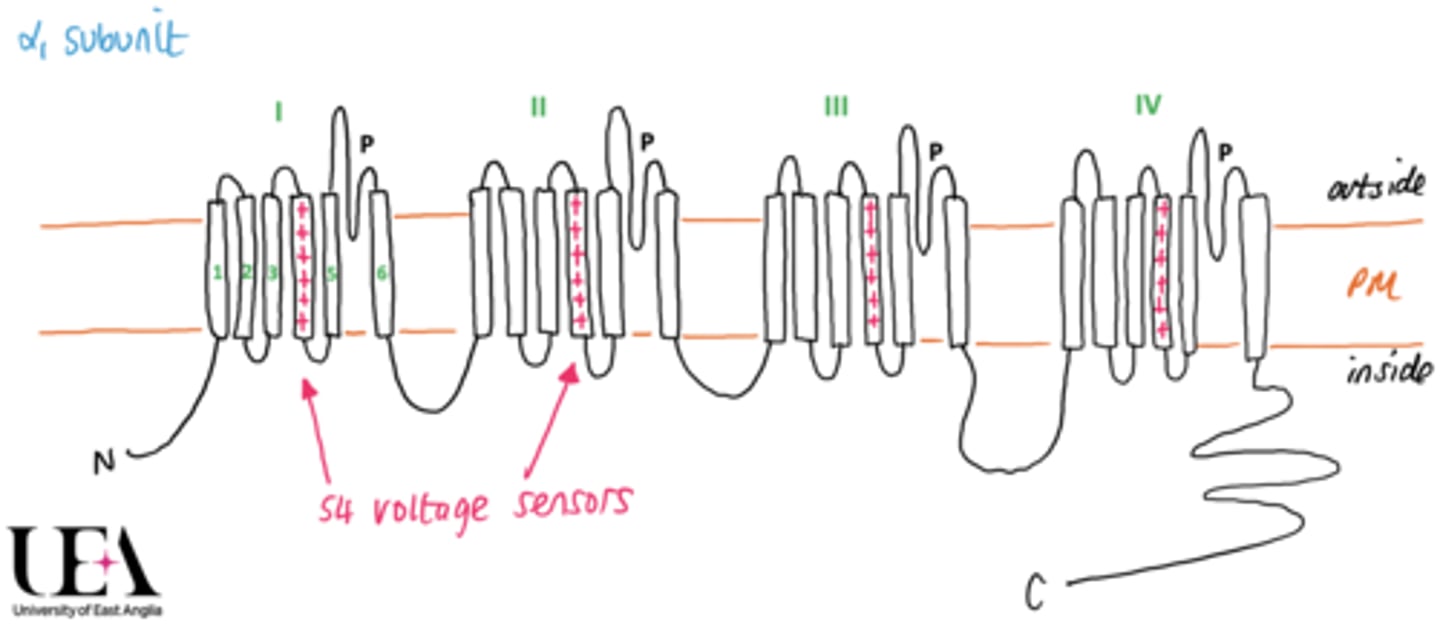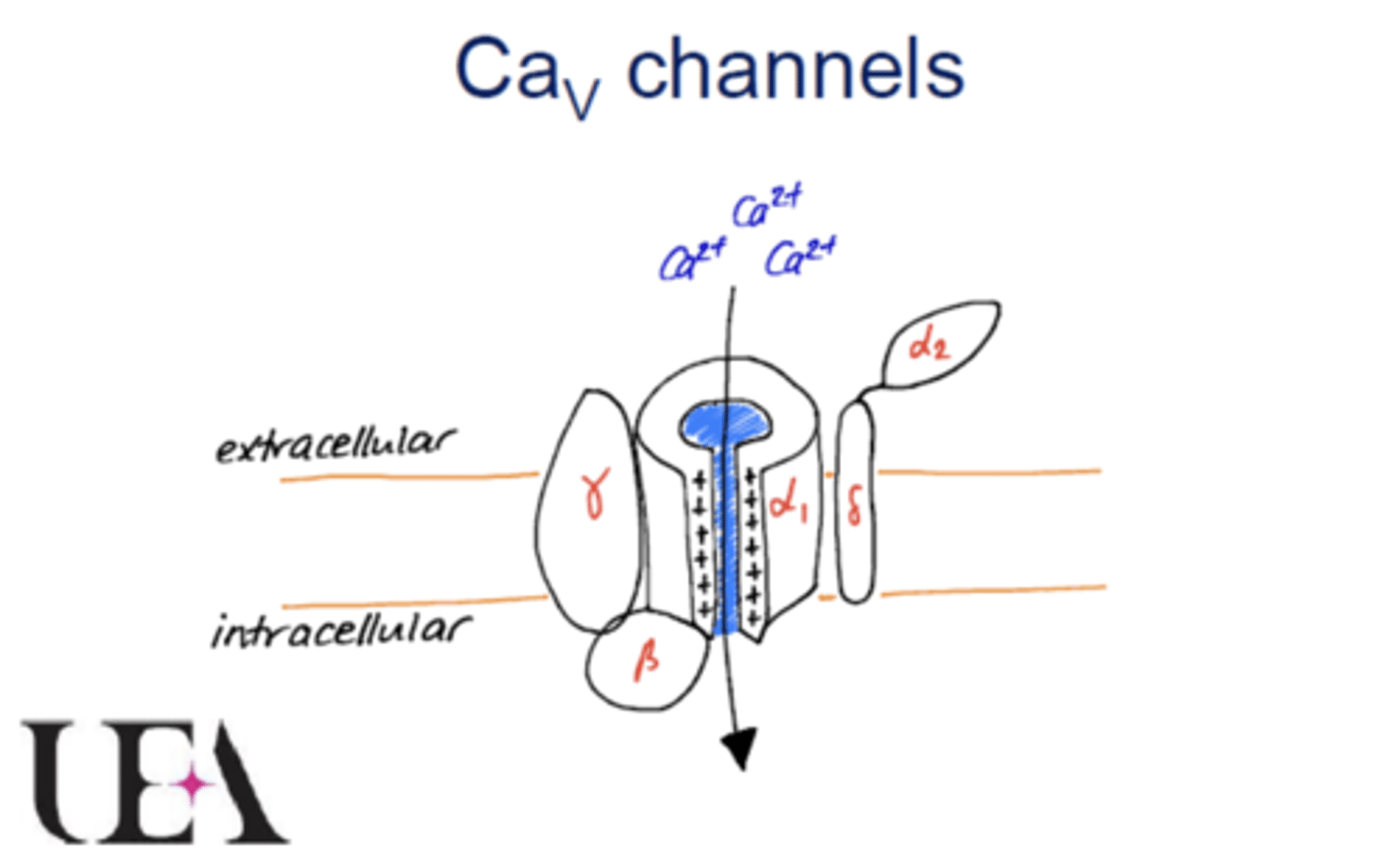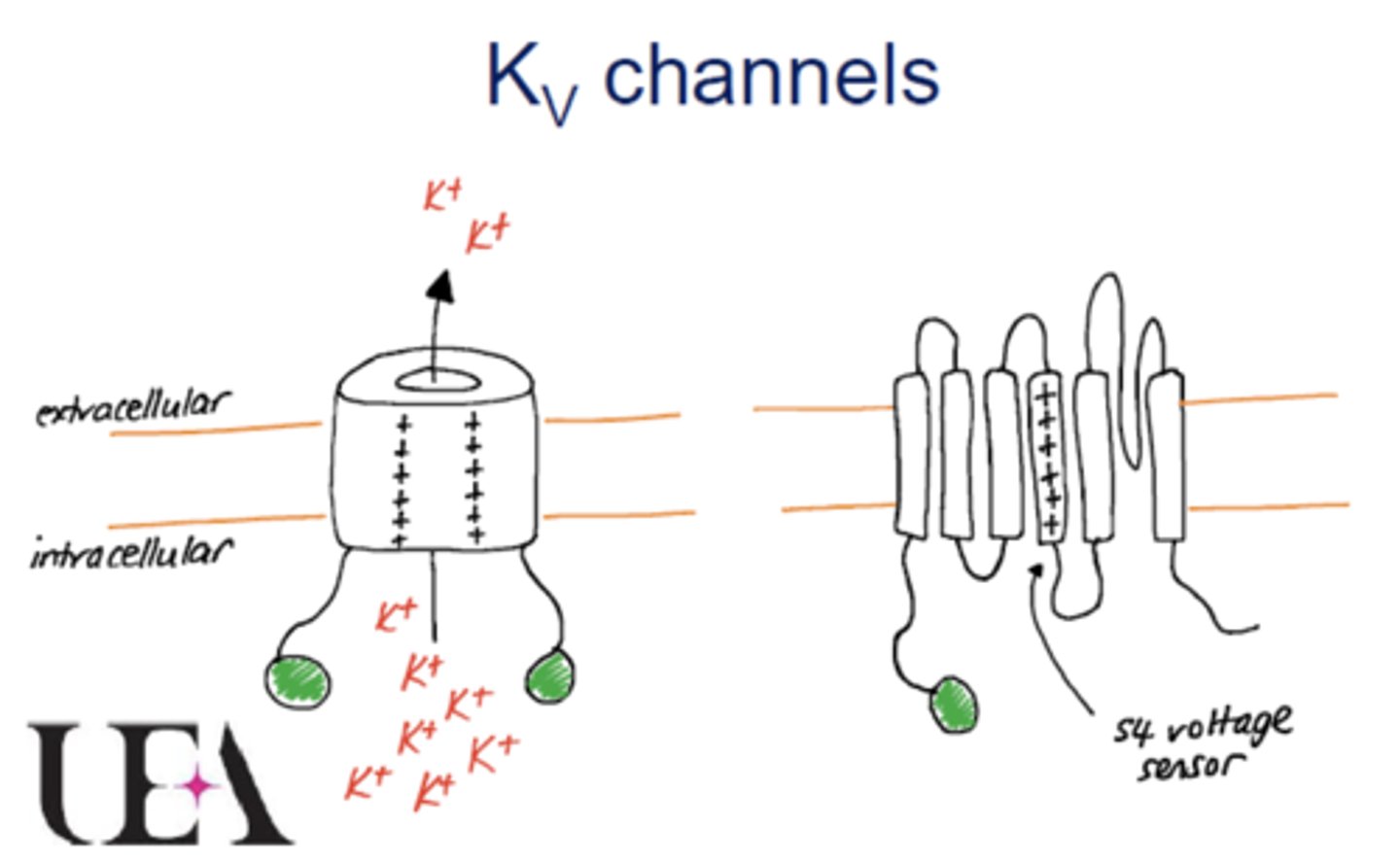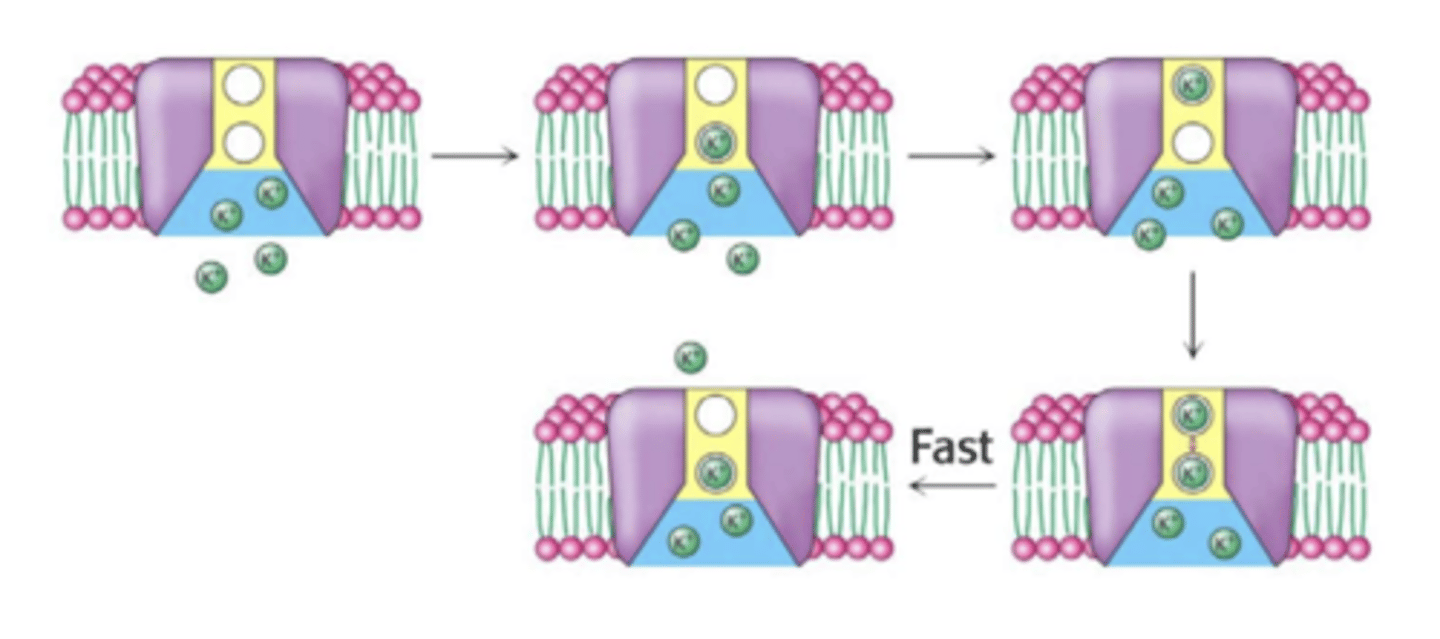Ion channels
1/23
There's no tags or description
Looks like no tags are added yet.
Name | Mastery | Learn | Test | Matching | Spaced |
|---|
No study sessions yet.
24 Terms
What are the three types of ion channels?
- Voltage gated
- Ligand gated
- Mechanically gated.
How do mechanically gated ion channels work?
"gate" opens/closes based on physical movement e.g., pressure or vibrations
-hair cells in inner ear
What are the three main ion channels?
- NaV
- CaV
- Kv
Describe the structure of the α1 subunit of the Voltage-gated Na+ channel.
Same as Ca2+ channel
- 4 repeating subunits with each containing 6 transmembrane domains.
- 4th transmembrane domain acts as a voltage sensor.
- Each transmembrane domain is connected across all repeating subunits.
- Contains a P loop which acts as a selectivity filter to control which ions move through channel.
- Contain an N-terminus and a C-terminus which are both intracellullar.

Describe the structure of the Voltage-gated Na+ channel.
- Contain the main α1 subunit as well as auxiliary subunits e.g., 2 x β subunit
- α1 subunit forms a pore in which Na+ ions move through.
- Auxiliary subunits are beside the main α1 subunits.

Describe the structure of an L-type calcium channels.
- Contains the main α1 subunit as well as auxiliary subunits e.g., β ,γ and an α2 subunit connected to δ subunit.
- α1 subunit forms a pore in which Ca2+ ions move through.
- Auxiliary subunits are beside the main α1 subunits.

Describe the structure of the main α1 subunit of a Ca2+ channel.
- 4 repeating subunits with each containing 6 transmembrane domains.
- 4th transmembrane domain acts as a voltage sensor.
- Each transmembrane domain is connected across all repeating subunits.
- Contains a P loop which acts as a selectivity filter to control which ions move through channel.
- Contain an N-terminus and a C-terminus which are both intracellular.

Describe the structure of the Voltage-gated K+ channel.
- Contains α-subunits that have 6 transmembrane domains.
- Has 4 repeating subunits which are tetrameric.
- The P loop forms the selectivity filter
- The S4 domain acts as the voltage sensor
- α-subunits forms the pore where K+ ions move through
- Does not have any auxiliary subunits.

How are ion channels activated and inactivated?
- As the cell becomes depolarised, the voltage-sensor moves, which causes the opening of the activation gate.
- The inactivation gate causes rapid inactivation of the channel.

What are non-selective ion channels?
Ion channels which allow more than 1 type of ion to move through it.
What are cationic ion channels?
Ion channels which are permeable to positive ions e.g. Na+ K + etc
What are anionic ion channels?
Ion channels which are permeable to negative ions e.g., Cl-
How are ion channels measured?
Patch clamp electrophysiology
Describe patch clamp electrophysiology.
- Glass pipette forms a tight seal over an ion channel
- Ions must flow through the pipette allowing changes in voltage to be measured.

What properties affect ion movements through channels?
- Size (ionic radius)
- Charge
- Free energy of hydration (how easy it is to remove water)
How does free energy of hydration change DOWN a group?
Free energy of hydration DECREASES down a group.
Describe the potassium channel selectivity filter.
- Made up of two loops.
- Contains two cation (k+) binding sites
- Contains four amino acids to provide carbonyl groups for binding to cation.
What is the billiard ball mechanism?
A model for the movement of ions through selectivity filters and ion channels.

How does the billiard ball mechanism work?
- Ion channels have two sites for ions to be held in before they are released to the other side.
- The first ion fills the first site and then moves onto the second site when another ion is present.
- When two ions fill both sites they repel each other due to being the same charge which cause the first ion to be forced to the other side.
- The second ion then moves to the second site allowing a new ion to fill the first one.
- This shows how ions to move through ion channels.

How do K+ ions move through selectivity filters on K+ channels.
- K+ is generally attached to 6 water molecules in the body however when it enter the channel it must remove 4 of these so it can move into the binding site.
- The removal of water requires desolvation energy.
- The removal allows K+ to bind to the four carbonyl groups on the amino acids.
- This allows the K+ to be more stable in the channel.
Describe why sodium cannot move through K+ channels.
The desolvation energy to remove 4 water molecules form sodium is too large, due to having a higher free energy of hydration, and sodium is less stable when it binds to the carbonyl group in the channel. Therefore preventing movement.
Why is the binding of K+ to carbonyl groups stronger than the binding of Na+ to the same carbonyl groups?
Na+ is much smaller and therefore cannot form good interactions with the carbonyl whereas K+ is the perfect size to form bonds with the carbonyls.
Describe how Na+ channel selectivity filters work.
- Na+ pore has a 5Å radius.
- Allows movement of Na+ and one water molecule to move through.
- Therefore any ion smaller than this can move through.
- Not as selective as K+ channel.

Describe the selectivity of Ca2+ channels.
- Competitive with Na+ meaning if no Ca2+ is present, Na+ will move through channel.
- Contains a negatively charged side chain of 4 glutamate amino acids which are important as a mutation to these (to lysine) reverses selectivity to Na+ instead of Ca2+